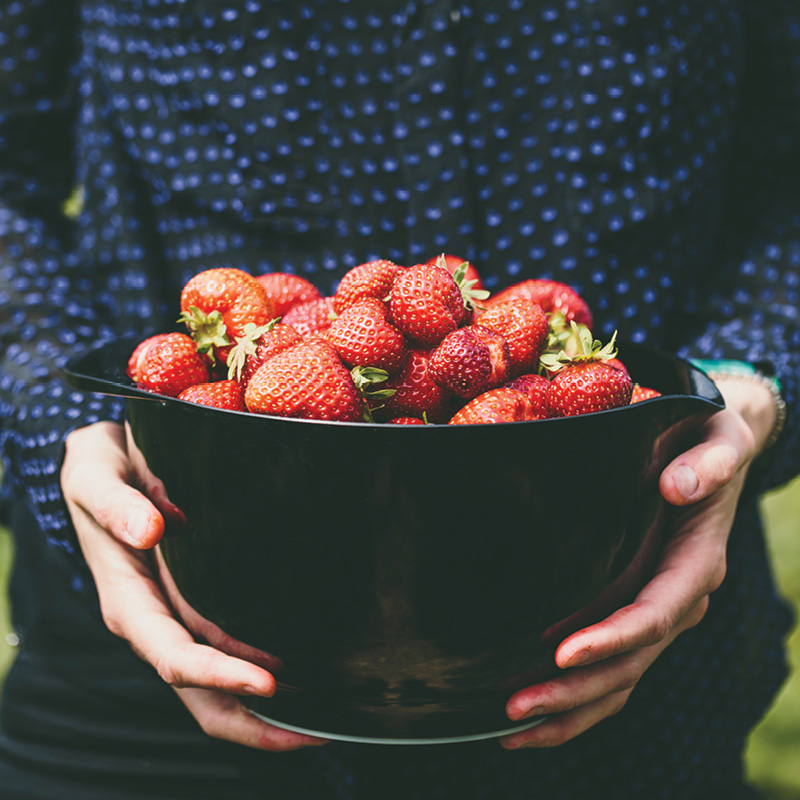 Q: “I’m wondering if we can we expect local organic strawberries this year? I know they must be grown somewhere around here, but they seem so rare in co-ops and farmers markets. Why is that?”
Q: “I’m wondering if we can we expect local organic strawberries this year? I know they must be grown somewhere around here, but they seem so rare in co-ops and farmers markets. Why is that?”
— Fiona, Bloomington
A: Great question, Fiona! Your observations are indeed astute; the elusive organic strawberry is a glistening rare ruby of local produce. That’s because this crop is among the more “high maintenance” of the fruits that can eke out a season in a state like Minnesota.
Cultivated strawberries demand weedless, nitrogen-rich soil, and must be bedded in straw to keep the root system moist under the hot gaze of a summer sun, as they are highly susceptible to drought. However, moist straw is the perfect environment for mildews and other detrimental fungi that can damage the fragile strawberry plant. Insects, too, flock to the shelter of the straw, drawn in by the fragrant flowers and fruits, and once there, wreak havoc. To combat all these attacks, conventionally grown strawberries are routinely pummeled with pesticides, herbicides, fungicides and fertilizers. This is why conventional strawberries so often top the charts of produce with the highest levels of chemical residues.
In order to grow a local organic strawberry, farmers have to find ways of combating pests without the margin-improving help of chemicals, and without the sunny days and mild nights of a California climate. This is no small task. For Erik Gundacker of Scenic Valley Farms in Readstone, Wisconsin, it has meant building a unique system of solar thermal “high tunnels” to house his strawberry plants. Looking like large hoop houses, these structures protect his crops from tumultuous weather, their temperature and humidity meticulously controlled by a remote all-in-one system that Gundacker, a former computer engineer, designed himself. He uses insect netting and vinegar traps to keep pests off his plants and applies compost to keep his soil healthy. When it’s time to harvest, his strawberries are hand picked directly into small baskets and shipped immediately, in a cool, dry storage container to the Wedge and other area cooperatives.
So what we’re talking about when we’re talking about a locally grown organic strawberry is a fruit so delicate and divine that we have almost no right to be enjoying it at all. The odds are stacked against us—by the numbers, something else should have gotten to it first (a bird, a beetle, a grey mold, etc.). But luckily for you, local berry guardians like Gundacker perform the labor of love that guarantees you’ll be able to enjoy these organic treasures come late June.
These berries may be smaller and pricier than the ones trucked in from California, but they are incomparably aromatic and ripe— their flavor as ephemeral as the golden haze of a summer afternoon. And because they’ve beaten the odds, their arrival is so much the sweeter. Celebrate them in a simple salad, or topped with a dollop of freshly whipped cream. Let their juices trickle down your chin and leave your fingers as sticky as a humid June night. They won’t be here for long, so cherish them while you can!
View the Summer 2016 Share PDF
Back to Summer 2016 Share articles